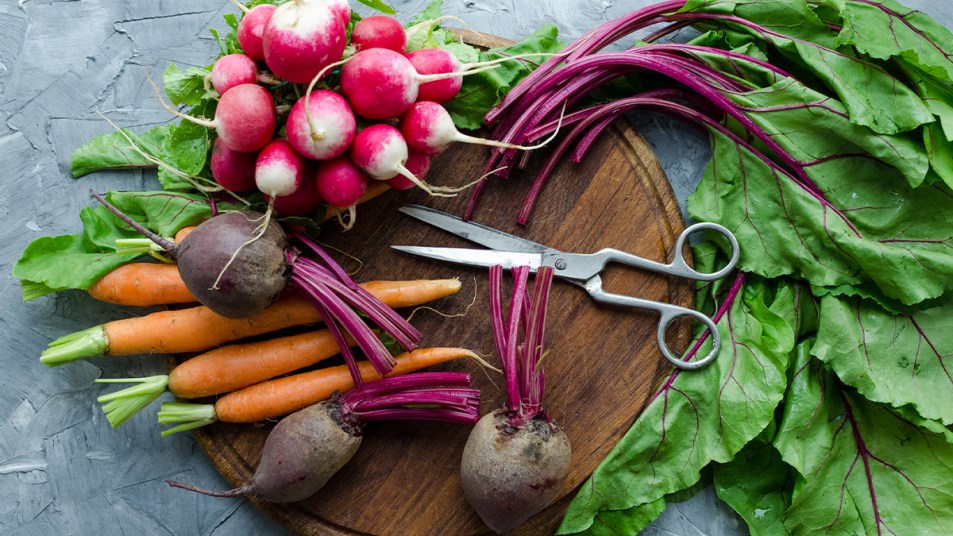Root Vegetables Harbor More Germs Than You May Think! Here’s How You Should Clean Them

If you’re like me and love taking a trip down the produce aisle just because, you’ll notice more bundles of carrots, radishes, and beets are starting to pop up. These in-season picks make for some tasty side dishes whether you roast or sauté them. But, before you cook these root vegetables, it’s important that you completely remove the dirt and germs from the skin’s surface to avoid any post-meal tummy troubles!
Giving your produce a rinse before eating sounds obvious, but not thoroughly cleaning them properly can make you sick. A CDC study looked at 4,600 outbreaks of foodborne illness caused by eating produce and found that 46 percent of cases were linked to consuming root vegetables. We spoke with Trevor Craig, food scientist and director of consulting at Microbac Laboratories, to learn how root vegetables can cause this illness if they’re not properly sanitized and how we can safely enjoy them while they’re at their peak!
Craig first notes that the environmental conditions the veggies are grown in generally make them at risk for being contaminated: “Dirt, fertilizer, and water sources are all-natural harbors of microorganisms, including those that can cause foodborne illness.”
He reassures us that this isn’t necessarily the farmers’ fault, but are just some of the aspects that come with growing food naturally. He adds that root vegetables tend to be more at risk than other kinds of vegetables because they are pulled directly from the dirt, making them more exposed to foodborne illness-causing pathogens such as E. coli and salmonella. Consuming foods with these pathogens can cause symptoms like diarrhea, nausea, and stomach cramps.
To prevent this, Craig says that it’s a good idea to clean those veggies after picking them up from the store and right before cooking if you’re not using them right away. “If something I purchased was contaminated by a pathogen, I wouldn’t want to have that sitting in my fridge,” he explains. “If I could avoid it and just washing it off isn’t going to ‘sterilize it,’ I would clean it before use too.”
Craig suggests using warm water and a vegetable brush to gently scrub each of the root vegetables for about 30 seconds to one minute to remove the dirt and bacteria from the surface. A brush like the Full Circle 2-in-1 Fruit and Vegetable Cleaning Brush (Buy on Amazon, $4.99) will do the trick for thoroughly cleaning your veggies and is a handy tool to keep in your kitchen cabinet.
Then, pat each vegetable with a paper towel until completely dry. Use immediately or store in an airtight container in the fridge away from raw meat or any foods that can drip down and result in cross-contamination. Repeat this scrubbing process when you’re ready to eat the root veggies in their raw form or whip up mouthwatering recipes like creamy hummus, homemade veggie chips, and roasted sweet potatoes!
One thing Craig emphasizes that we shouldn’t forget to do is wash our hands in between handling various foods at home. This is another quick step that will reduce your foodborne illness risk and save you the unnecessary stomach troubles later on.
With these things in mind, we should be able to eat our favorite delicious and nutritious root veggies worry-free for the rest of fall!
















